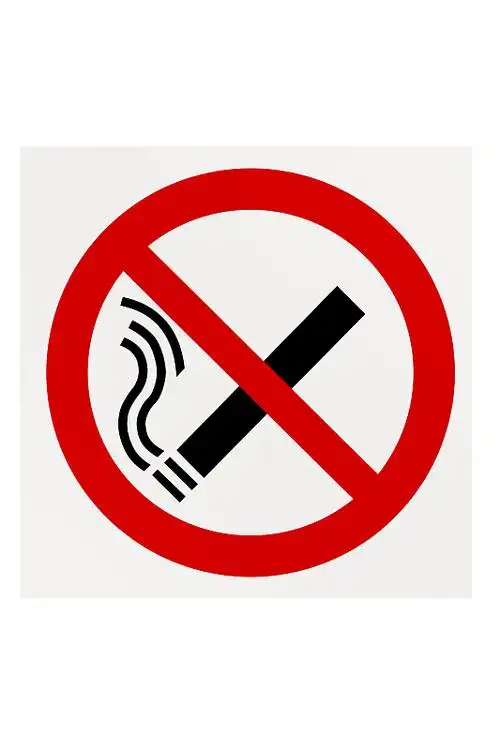The Vicious Cycle: How Tobacco Use Complicates Arrhythmia Management in Pulmonary Heart Disease
Managing a chronic illness is a journey that requires careful navigation, and this is especially true for individuals living with pulmonary heart disease. This condition, where the heart's right side struggles to pump blood to the lungs due to high blood pressure in the lung arteries, is challenging enough on its own. However, a common and detrimental habit can turn this difficult journey into an even more treacherous path: tobacco use. For patients with pulmonary heart disease who also develop arrhythmias, or irregular heartbeats, smoking creates a perfect storm that severely complicates and undermines their drug treatment. Understanding this dangerous interplay is crucial for both patients and healthcare providers aiming to achieve better health outcomes.
Let's first set the stage by understanding the core players. Pulmonary heart disease, often referred to as cor pulmonale, is not a primary heart condition. It's a consequence of lung ailments like Chronic Obstructive Pulmonary Disease (COPD), emphysema, or pulmonary fibrosis. These lung diseases damage the delicate blood vessels in the lungs, forcing the right ventricle of the heart to work much harder to push blood through the constricted and high-resistance vessels. Over time, this extra strain causes the right ventricle to enlarge and weaken.
Arrhythmias are a frequent and dangerous companion to pulmonary heart disease. The most common type is atrial fibrillation, a rapid and chaotic beating of the heart's upper chambers. When the right ventricle is strained and the heart muscle is stretched and deprived of oxygen, its electrical system becomes unstable, leading to these irregular rhythms. An arrhythmia in this context is not just a minor inconvenience; it can significantly worsen shortness of breath, increase the risk of stroke, and lead to heart failure.
The standard approach to managing this complex situation involves a class of drugs known as antiarrhythmic medications. These drugs are designed to stabilize the heart's electrical activity, restoring a normal rhythm or controlling the heart rate. However, their effectiveness is highly dependent on a stable physiological environment. This is where tobacco use enters the picture, acting as a powerful disruptor.
How Tobacco Directly Sabotages Treatment
Tobacco smoke is a toxic cocktail of over 7,000 chemicals, and its impact on the body is multifaceted and profound. For a patient undergoing drug treatment for arrhythmias in pulmonary heart disease, smoking undermines therapy in several critical ways.
-
Accelerated Drug Metabolism and Reduced Efficacy: One of the most significant pharmacological challenges posed by smoking is its effect on the liver. Certain components of tobacco smoke, notably polycyclic aromatic hydrocarbons, are potent inducers of a group of liver enzymes known as cytochrome P450. These enzymes are responsible for metabolizing many commonly prescribed medications, including several vital antiarrhythmic drugs like propafenone and verapamil.
When a patient smokes, they essentially "rev up" these liver enzymes. The body then breaks down and clears the antiarrhythmic medication from the system much faster than intended. This means the drug levels in the bloodstream may never reach a therapeutic concentration high enough to effectively control the arrhythmia. The result is perceived treatment failure. A doctor might prescribe a standard dose, but for a smoker, it's as if they are taking a sub-therapeutic dose, leaving their heart rhythm unstable and uncontrolled. This phenomenon is a key reason for the ineffectiveness of arrhythmia drugs in smoking patients.
-
Worsening of Underlying Pulmonary Hypertension: The primary cause of pulmonary heart disease is high blood pressure in the lungs (pulmonary hypertension). Nicotine and other toxins in tobacco are powerful vasoconstrictors, meaning they cause the blood vessels to tighten and narrow. This directly exacerbates pulmonary hypertension, putting even more strain on the already struggling right ventricle. More strain leads to further enlargement and weakening of the heart muscle, which in turn creates a more fertile ground for severe and treatment-resistant arrhythmias to develop. It's a vicious, self-perpetuating cycle where tobacco use directly fuels the very condition that makes the arrhythmia worse.
-
Systemic Hypoxia and Electrical Instability: Smoking damages the lungs, impairing their ability to absorb oxygen and release carbon dioxide. This leads to chronically low oxygen levels in the blood, a condition known as hypoxia. The heart muscle is extremely sensitive to oxygen deprivation. Hypoxia can directly irritate the heart's electrical conduction system, triggering ectopic beats and sustaining arrhythmias like atrial fibrillation. Furthermore, hypoxia can alter the way heart cells handle electrolytes like potassium and calcium, which are fundamental to maintaining a stable heart rhythm. This creates a direct link between smoking and drug-resistant heart rhythms, as the root trigger (hypoxia) remains unaddressed by the medication.
-
Increased Sympathetic Tone and Heart Strain: Nicotine is a stimulant. It activates the sympathetic nervous system—the "fight or flight" response—leading to an increased heart rate and higher blood pressure. For a heart already burdened by pulmonary heart disease and struggling with an irregular rhythm, this added stress is tremendously damaging. The increased heart rate shortens the time the heart has to fill with blood, reducing its efficiency. It also increases the heart's demand for oxygen at a time when oxygen supply may already be compromised. This heightened state of arousal makes it far more difficult for antiarrhythmic drugs to calm the heart and establish a stable rhythm.
The Clinical Conundrum for Doctors and Patients
This multi-pronged attack by tobacco creates a significant clinical dilemma. Cardiologists and pulmonologists find themselves in a frustrating position. They may need to prescribe higher, and potentially riskier, doses of antiarrhythmic drugs to achieve any effect, which increases the likelihood of side effects. They might have to try multiple different medications, a process that is time-consuming and discouraging for the patient. Ultimately, the impact of tobacco on pulmonary heart disease therapy is so profound that it can render even the most advanced pharmacological strategies largely ineffective.
The consequences extend beyond just heart rhythm. The combination of uncontrolled arrhythmias and worsening pulmonary hypertension drastically reduces a patient's exercise capacity and quality of life. Simple tasks become insurmountable challenges. The risk of hospitalization for heart failure exacerbations or thromboembolic events like stroke rises sharply.

Breaking the Cycle: The Imperative of Smoking Cessation
Given the profound ways in which tobacco undermines treatment, it becomes unequivocally clear that smoking cessation is not just a general health recommendation; it is an integral and non-negotiable component of the medical management of arrhythmias in cor pulmonale. Quitting tobacco is, in effect, one of the most powerful "drugs" in the treatment regimen.
The benefits of cessation begin almost immediately:
- Within 24 hours: Carbon monoxide levels in the blood drop, improving oxygen delivery to the heart muscle.
- Within a few weeks: Lung function and circulation begin to improve, reducing the burden on the right ventricle.
- Within months: The inflammatory response calms down, and the hyper-stimulation of the liver enzymes gradually reverses.
This last point is critical. As the liver's metabolic activity normalizes, the body will process antiarrhythmic drugs at the intended rate. This allows for predictable dosing and finally gives the medication a true chance to work. Smoking cessation, therefore, directly addresses the core issue of difficulties in treating cardiac arrhythmia in smokers by removing the primary obstacle to successful pharmacotherapy.
For patients, this journey is undeniably challenging. Nicotine addiction is powerful. However, framing smoking cessation as a direct and essential part of their cardiac and pulmonary treatment can be a powerful motivator. It is not about giving up a habit; it is about actively choosing a treatment that will make all their other medications work better, stabilize their heart rhythm, improve their breathing, and ultimately, prolong their life. Support from healthcare providers, combined with counseling, nicotine replacement therapies, and other medications, can make this transition possible.
In conclusion, the relationship between tobacco use, pulmonary heart disease, and arrhythmia treatment is one of direct conflict. Tobacco smoke actively sabotages the pharmacological management of arrhythmias through accelerated drug metabolism, worsened pulmonary hypertension, systemic hypoxia, and increased cardiac strain. To believe that drug therapy alone can succeed while a patient continues to smoke is to overlook the fundamental pathophysiology of the disease. A comprehensive, patient-centered treatment plan must place smoking cessation at its core. By eliminating this primary disruptor, we can create a stable physiological foundation upon which antiarrhythmic drugs can finally perform their life-saving work, offering patients with pulmonary heart disease a genuine chance for a more stable and improved quality of life.














